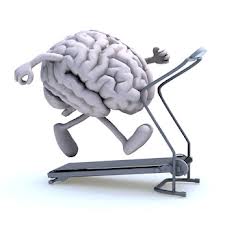Ask a Neuroscientist! - What is the synaptic firing rate of the human brain?
/A couple of days ago, we received an email from a high school student named Joseph. Joseph, having spent some time trawling the net and his library, found himself with no answer to the question, "How many synaptic fires [sic] are there (in a human brain) per second?"
An edited version of my response to the question appears below. In my response, I break down the neural complexity that makes answering Joseph's question extremely difficult. I then totally ignore that complexity in order to produce two firing rate ranges: neuronal and synaptic.
Do you have an additional mathematical solution to Joseph's question? A philosophical objection to the idea of quantifying the human brain in terms of synaptic firing rates? The comments section is where it usually is.
What is the synaptic firing rate of the human brain?
I'd like to be able to provide a single number, but in reality, the brain is pretty complex, so it's difficult to come up with a single number to describe the firing rate of the entire brain.
But let's explore the question a bit.
First, I'm going to simplify the question by looking at neuronal firing rates, rather than synaptic firing rates. So from that starting point, if we wanted to be really simplistic about the whole thing, we could estimate a firing rate. Such a calculation might go something like this:
Current estimates of the number of neurons in the human brain are around 86 billion (see Bradley Voytek's discussion of how scientists extrapolate this number, also this article on the estimate). Multiply 86 billion by the "average firing rate" of an individual neuron.
Now, the firing rate of an individual neuron can vary quite a bit, and the firing rates of different types of neurons also is extremely variable. This variance in part depends on the intrinsic properties of the neurons (some a tuned to fire very, very quickly - 200+ Hz, whereas some neuron types prefer to fire more slowly, below the 10Hz range). A lot of the variance also depends on what the brain is doing. For example, neurons in the visual system may be practically silent in the dark (or during sleep), but will be firing very fast when visual information is coursing into the nervous system from the eyes. And the exact rate of firing in visual neurons is going to depend on the properties of the visual stimulus (how bright, how fast it moves, what color). Similarly, neurons in your hippocampus, a brain structure important for memory and spatial navigation, may fire quickly as you walk around your room, but may be relatively quiet as you sit in front of a computer reading this email.
All this variability is what makes it so hard to estimate the firing rate of a human brain at any given second.
But, if you press me for a back-of-the envelope calculation, I'd say the best way to estimate the firing rate of a neuron is to come up with a potential range. Now, there's probably been a bunch of research on the distribution of firing rates within various cell populations, and quite frankly, I'd only really believe that rate in the context of a particular activity you are interested (rates can change dramatically between passive sitting and active participation in a task). But generally, the range for a "typical" neuron is probably from <1 Hz (1 spike per second) to ~200 Hz (200 spikes per second).
To ruthlessly simplify, treating all 86 billion neurons in the human brain as copies of that a single "typical" neuron, ignoring all of the glorious cellular specificity that characterizes the brain, we're left with a range of 86 billion to 17.2 trillion action potentials per second.
Let's go back to the question of synaptic firing rates. Even though an action potential produced in a neuron is not guaranteed to produce release of neurotransmitter at a synapse, let's ignore that point and assume the opposite. I've seen people quote a minimum number of synapses as 100 trillion (although I'm not clear where that number came from). So, let's do our math again. 100 trillion synapses, each with an independent firing rate range of < 1Hz to ~200 Hz. So a range of 100 trillion to 20 quadrillion.
Again, and I really cannot stress this enough, these numbers doing reflect what actually goes on in a human brain in any given second. The actual firing rate depends so much on what the brain is doing at that moment, that back-of-the-envelope calculations such as the ones I just wrote down are (in my opinion) absolutely meaningless. But for what its worth, there they are. And if these numbers at least give us a range, you can imagine the sheer computational power that will be required to record all the neurons the human brain.
Ask a Question!
If you have a question for one of our neuroscientist contributors, email Astra Bryant at stanfordneuro@gmail.com, or leave your question in the comment box below.


 In this edition of Ask a Neuroscientist, we’ll answer two questions that address a similar principle: Can you train to have a better brain?
In this edition of Ask a Neuroscientist, we’ll answer two questions that address a similar principle: Can you train to have a better brain?